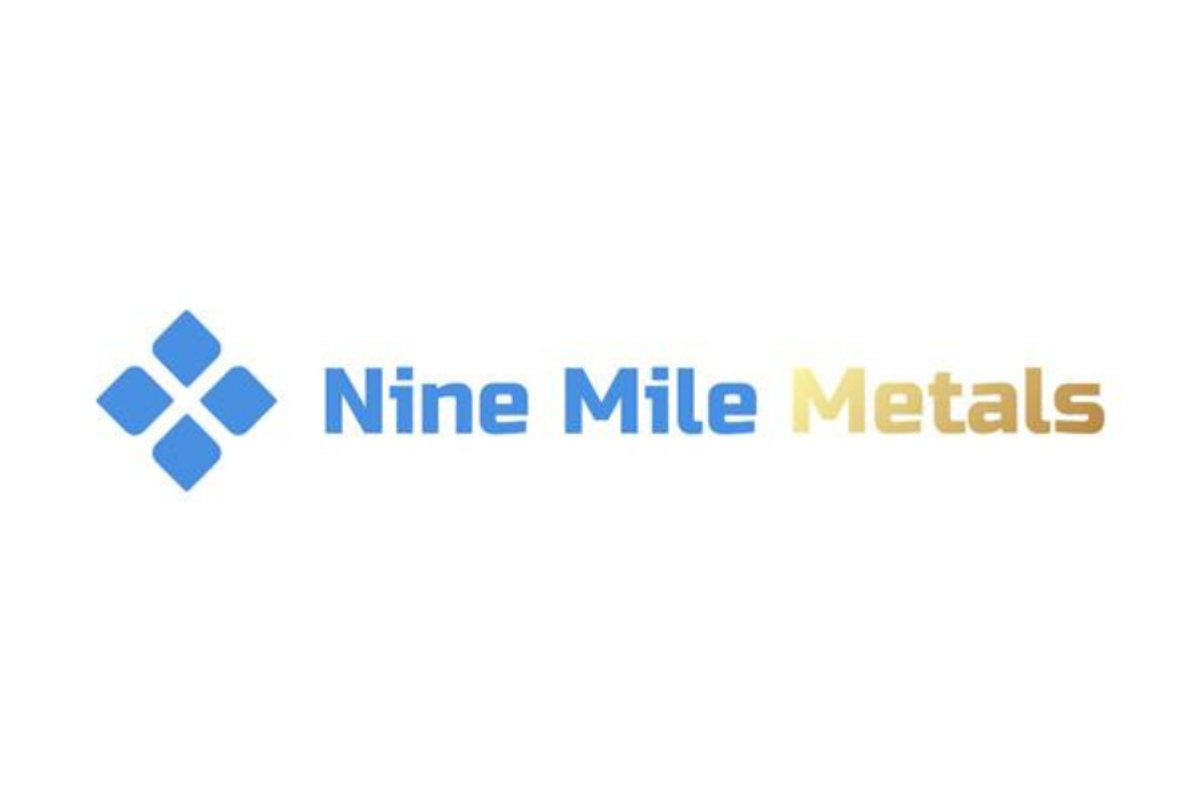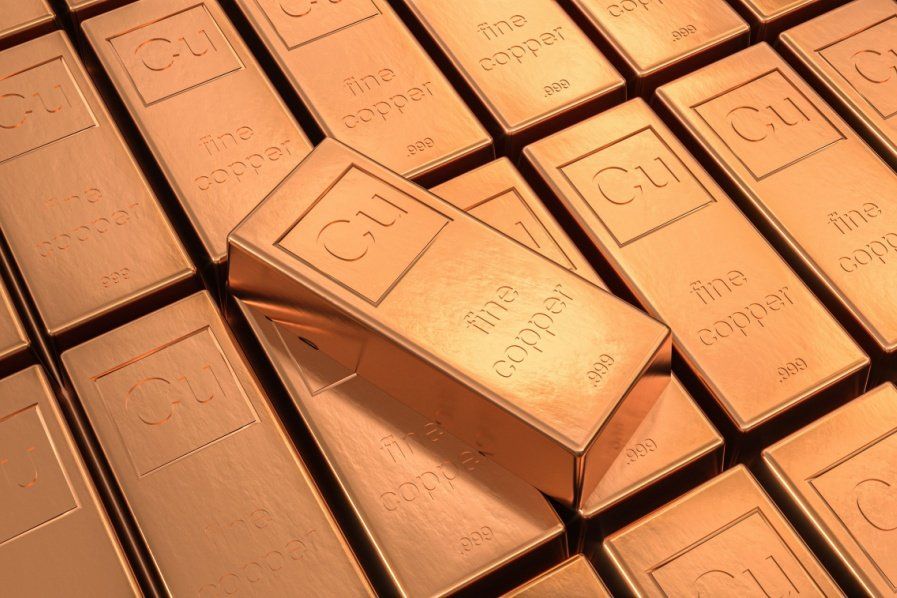
May 25, 2023
NINE MILE METALS LTD. (CSE: NINE, OTCQB: VMSXF, FSE: KQ9) (the “Company” or “Nine Mile”), is pleased to announce that it has completed the first half of the Nine Mile Brook Drill Program II completing 14 holes representing 3,059 meters (Figure 1, Table 1). The initial holes tested numerous geological and geophysical targets. Target areas included I.P. responses at Hinge A, magnetic nodes south of Hinge A, I.P. anomalies to north along the contact of the Boucher Brook sediments and felsic volcanic rocks of the Spruce Lake Formation (California Lake Group) and a previously untested gravity target to the southwest (NM23019). Drill Hole AI (Historical Artificial Intelligence Target) was setup on the same collar as NM23027. Drill holes NM23031, NM23032 and NM23033 were collared within the circle southwest of the VMS Lens (LENS).
A planned pause in activity coincided with “Spring Break Up” this year where the annual snow melt causes flooding of access roads and drill sites. To limit damage during this period, a government mandated road closure was put in place along our main access route until drier conditions prevail. As soon as the roads and access routes open up, we look forward to the continuation of the drill program.
As part of our regular exploration process, a pause in drilling is scheduled, allowing the team to complete the logging and formatting of data for migration into the living 3D model. The model has projections of the drill holes including the geology, structure, mineralization, and subsurface geophysical anomalies allowing for better interpretation and targeting going forward.
Priority drill holes generated from the I.P. survey (MAG / IP / RES) included a series of 4 holes to the north along the sediment / felsic volcanic contact, California Lake Group and 3 drill holes on the south flank of Hinge A. The targets included well defined magnetic, chargeability and resistivity anomalies along the felsic / sediment contact. Elevated magnetics are characteristic of VMS deposits in the BMC, most deposits having associated iron formation proximal to the mineralization. Chargeability is indicative of sulphide mineralization while resistivity defines associated alteration such as silicification.
Southwest of Hinge A, a new, mineralized system was identified associated with a subtle magnetic node similar to that adjacent to the VMS mineralization drilled in 2022. The target was intersected by 5 holes totalling 727m and consisted of a hydrothermally altered gabbro extensively mineralized with pyrite and arsenopyrite, characteristic of gold deposits in the BMC. To date, a total of 367 samples of 700+ identified have been cut and sent to ALS Global in Moncton, New Brunswick for preparation with final Fire Assay Au and multi-element analysis being conducted in Vancouver, British Columbia. Assays have been received; however, the Au values were sub economic.
Figure 1: Drill Collars, Phase 1
| Drillhole ID | Total Length | Azimuth | Dip | Target Depth | Target |
| T01-A-RM | 295 | 135 | -45 | 50 150 | IP/RES |
| T01-B-RM | 416 | 120 | -43 | 200 350 | MAG IP/RES |
| T01-C-RMI | 215 | 153 | -46 | 50 110 | MAG IP/RES |
| T02-A-RMI | 191 | 139 | -51 | 150 | IP/RES |
| T05-A-RMI-Priority | 458 | 136 | -74 | 50 225 | IP/RES |
| T14-A-RMI | 168 | 270 | -45 | 50 | MAG IP/RES |
| NM23027 | 206 | 135 | -45 | 50 - 90 + | MAG |
| AI | 225 | 270 | -45 | 100+ | Geochem |
| NM23023 * | 166 | 135 | -45 | 0 - 90 | Geology |
| NM23024 * | 193 | 135 | -45 | 0 - 90 | Geology |
| NM23031 * | 121 | 135 | -45 | 0 - 90 | Geology |
| NM23032 * | 137 | 135 | -45 | 0 - 90 | Geology |
| NM23033 * | 110 | 150 | -45 | 0 - 90 | Geology |
| NM23019 | 158 | 180 | -45 | 100+ | Gravity |
| TOTAL | 3,059 |
Table 1: Phase 2 Drill Program (1st stage), Nine Mile Brook (Completed Holes to Date)
Reconciliation of the targets with the drill hole intersections is complete, identifying a favourable target horizon in the northwest along the California Lake Group, “Islands” felsic / sediment contact. In drill hole T01B-A-RMI, mineralization near surface and at depth intersected veinlets of VMS mineralization including chalcopyrite (Cu), sphalerite (Zn) and galena (Pb) in a sequence of rocks that typically host VMS deposits. Intersecting mineralization to the northwest along the contact suggests that the origin of the VMS mineralization at the Lens area may have originated in that area, being relocated by numerous episodes of folding and faulting. The presence of felsic volcanics further suggests they may be more abundant than previously thought, the rusty, gossanous pyritized rhyolite adjacent to the lens having the same characteristics as the exposures to the north.
Original Analysis processing by EarthEx initially identified 100+ anomalies in the geophysical dataset. Drill results and modeling of data has resulted in a revised interpretation of the geological setting at Hinges A and B, the technical team believing the trends form a broader structure due to folding and not separate hinges as previously thought. Reinterpretation of the geological setting has also eliminated specific targets and target areas previously classified as priority. The team is now focused on more favourable target signatures associated with recently defined, prospective geology.
Advanced targeting is underway by EarthEx Geophysical Solutions Inc. (“EarthEx”) for the Lens area, the favourable horizon to the northwest and Hinge B where an untested conductor defined by EarthEx is adjacent to felsic volcanics. At the Lens, no historic drill holes have been drilled to the west where we now believe felsic volcanics may be more abundant than previously thought. EarthEx is now reviewing the geophysical data in that area, especially where subsurface continuity of features appears adjacent to or proximal to that defining the lens. To the northwest, the favourable horizon is also being re-evaluated, focusing on the geology, specifically the felsic volcanics and continuity of related subsurface anomalies.
As previously announced, Lantech Drilling has been engaged with their mobile track mounted drill for part 2 of the Nine Mile Brook Drill Program.
“The scheduled downtime has allowed the Technical Team time to review progress to date and make the necessary adjustments going forward. Newly prioritized drill holes are now planned west of the Lens and to the north along the favourable horizon defined by the California Lake Group contact where VMS mineralization was intersected in drill hole T01B-A-RMI. Drilling is also planned for Hinge B where an untested conductor is adjacent to Spruce Lake felsic volcanics. We look forward to the continuation of our fully funded Nine Mile Brook drill program. This knowledge recently gained is paramount in our exploration endeavours for the source of the Lens and multiple systems on Nine Mile Brook Properties. We look forward to applying the advanced analysis learned during the 1st half of the program, including the stratigraphy and sequencing of the geology that must be present for the host mineralization,” stated Gary Lohman, B.Sc., P. Geo., VP Exploration and Director.
* McCutcheon et al., 2005. * Note: The resource is historical and cannot be relied upon.
The disclosure of technical information in this news release has been prepared in accordance with Canadian regulatory requirements as set out in National Instrument 43-101 – Standards of Disclosure for Mineral Projects (“NI 43-101”) and reviewed and approved by Gary Lohman, B.Sc., P. Geo., Director who acts as the Company’s Qualified Person, and is not independent of the Company.
About Nine Mile Metals Ltd.:
Nine Mile Metals Ltd. is a Canadian public mineral exploration company focused on Critical Minerals Exploration (CME) VMS (Cu, Pb, Zn, Ag and Au) exploration in the world-famous Bathurst Mining Camp, New Brunswick, Canada. The Company’s primary business objective is to explore its four VMS Projects: Nine Mile Brook VMS; California Lake VMS; Canoe Landing Lake (East–West) VMS and our new Wedge VMS Projects. The Company is focused on Critical Minerals Exploration (CME), positioning for the boom in EV and green technologies requiring Copper, Silver, Lead and Zinc with a hedge with Gold.
Social Media
| @NineMileMetals | |
| Nine Mile Metals | |
| @ Nine Mile Metals | |
| Nine Mile Metals | |
| YouTube | @ninemilemetals |
ON BEHALF OF NINE MILE METALS LTD.
“Gary Lohman, B.Sc., P. Geo.”
VP Exploration and Director
T: +1.905.299.8552
E: gary@ninemilemetals.com
Forward-Looking Information:
This press release may include forward-looking information within the meaning of Canadian securities legislation, concerning the business of Nine Mile. Forward-looking information is based on certain key expectations and assumptions made by the management of Nine Mile. In some cases, you can identify forward-looking statements by the use of words such as “will,” “may,” “would,” “expect,” “intend,” “plan,” “seek,” “anticipate,” “believe,” “estimate,” “predict,” “potential,” “continue,” “likely,” “could” and variations of these terms and similar expressions, or the negative of these terms or similar expressions. Forward-looking statements in this press release include that (a) the origin of the VMS mineralization at the Lens area may have originated in the northwest area, (b) the presence of felsic volcanics further suggests they may be more abundant, and (c) at the Lens, no historic drill holes have been drilled to the west where we now believe felsic volcanics may be more abundant. Although Nine Mile believes that the expectations and assumptions on which such forward-looking information is based are reasonable, undue reliance should not be placed on the forward-looking information because Nine Mile can give no assurance that they will prove to be correct.
The Canadian Securities Exchange (CSE) has not reviewed and does not accept responsibility for the adequacy or the accuracy of the contents of this release.

Sign up to get your FREE
55 North Mining Investor Kit
and hear about exciting investment opportunities.
- Corporate info
- Insights
- Growth strategies
- Upcoming projects
GET YOUR FREE INVESTOR KIT
The Conversation (0)
17h
55 North Mining
High-grade Manitoba gold project with exploration upside and strategic positioning in an active mining district
High-grade Manitoba gold project with exploration upside and strategic positioning in an active mining district Keep Reading...
29 December
Nine Mile Metals Announces Certified High-Grade Assay Results up to 15.00% Copper from the Wedge Project, Bathurst, New Brunswick
Nine Mile Metals LTD. (CSE: NINE,OTC:VMSXF) (OTC Pink: VMSXF) (FSE: KQ9) (the "Company" or "Nine Mile") is pleased to announce Certified Assay results for volcanogenic massive sulphide (VMS) mineralization collected from the pre-drill area on the Wedge VMS Project, in the world-famous Bathurst... Keep Reading...
22 December
Nine Mile Metals Announces Completion of DDH WD-25-02B and Continues to Confirm Zones of Copper Rich VMS with 66 Meters of Mineralization at the Wedge Project
Nine Mile Metals LTD. (CSE: NINE,OTC:VMSXF) (OTC Pink: VMSXF) (FSE: KQ9) (the "Company" or "Nine Mile") is pleased to announce that the 3rd drill hole in its Wedge Western Extension Drill Program (DDH-WD-25-02B) has been completed.DDH WD-25-02B was collared approximately 60 meters northwest of... Keep Reading...
19 December
Top 5 Canadian Mining Stocks This Week: Pacific Empire Metals Gains 200 Percent on Drill Results
Welcome to the Investing News Network's weekly look at the best-performing Canadian mining stocks on the TSX, TSXV and CSE, starting with a round-up of Canadian and US news impacting the resource sector.Statistics Canada released November’s consumer price index (CPI) data on Monday (December... Keep Reading...
17 December
Nine Mile Metals Announces Certified High-Grade Assay Results up to 15.21% Copper from the Wedge Project, Bathurst, New Brunswick
Nine Mile Metals LTD. (CSE: NINE,OTC:VMSXF) (OTC Pink: VMSXF) (FSE: KQ9) (the "Company" or "Nine Mile") is pleased to announce Certified Assay results for volcanogenic massive sulphide (VMS) mineralization collected from the pre-drill area on the Wedge VMS Project, in the world-famous Bathurst... Keep Reading...
16 December
Top 5 Copper News Stories of 2025
Copper prices surged to unprecedented levels in 2025, hitting all-time highs. Tight supply played a key role, along with solid demand tied to electrification and the shift to cleaner energy.The red metal's big moves came alongside gains in precious metals, highlighting an unusual year in which... Keep Reading...
Latest News

Sign up to get your FREE
55 North Mining Investor Kit
and hear about exciting investment opportunities.
- Corporate info
- Insights
- Growth strategies
- Upcoming projects
GET YOUR FREE INVESTOR KIT
Interactive Chart
Latest Press Releases
Related News
TOP STOCKS
American Battery4.030.24
Aion Therapeutic0.10-0.01
Cybin Corp2.140.00




